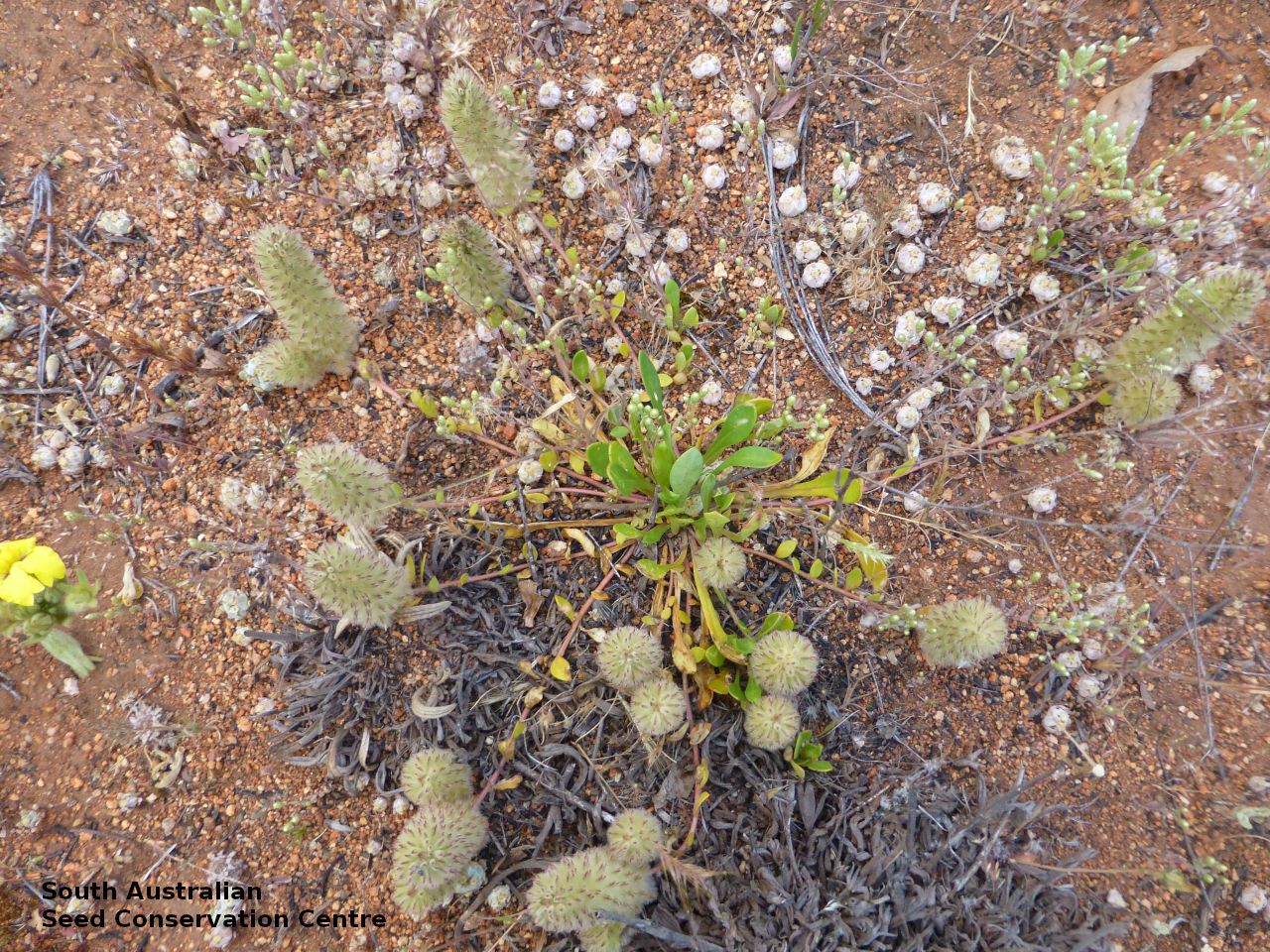











Botanical art
Prior names
Ptilotus spathulatus f. angustatus
Ptilotus spathulatus f. spathulatus
Trichinium mucronatum
Trichinium spathulatum
Common names
Spoon-leaf Pussy-tail
Pussy-tails
Cats Paws
Etymology
Ptilotus from the Greek 'ptilotos' meaning feathered or winged; referring to the hairy flowers. Spathulatus from the Greek 'spathulata' meaning shaped like a spatula (spoon-shape); referring to the spoon-shaped leaves.
Distribution and status
Found in the southern regions of South Australia, growing in areas of moderate rainfall. Also found in Western Australia, New South Wales, Victoria and Tasmania. Native. Common in South Australia. Common in the other states.
Herbarium regions: Flinders Ranges, Eastern, Eyre Peninsula, Northern Lofty, Murray, Yorke Peninsula, Southern Lofty, Kangaroo Island, South Eastern, Green Adelaide
NRM regions: Adelaide and Mount Lofty Ranges, Eyre Peninsula, Kangaroo Island, Northern and Yorke, South Australian Arid Lands, South Australian Murray-Darling Basin, South East
AVH map: SA distribution map (external link)
Plant description
A procumbent perennial herb spreading from a rosette to 40 cm across. Leaves slightly fleshy. Flowers are yellow with pink tips, cone-shaped heads appearing in spring and summer. Fruits are a cone-shaped head containing numerous, long papery and hairy fruits. Each fruit contains one seed. Seeds are brown reniform seeds to 2 mm long and 1.2 mm wide. Seed embryo type is peripheral.
Seed collection and propagation
Collect seeds between October and January. Be very careful when collecting this species as the fruits contain fine hairs that may cause an allergic reaction for some people. Collect the fruit heads when dried to a pale straw colour. Each fruit should come off the head easily when fingers are rubbed up the stem. Collect more fruits than required as not all fruits contain viable seed. Be very careful when cleaning this species as the fruits contain fine hairs that may cause an allergic reaction for some people. To clean, rub the fruit heads gently to dislodge the seed at the base of each fruit. Use a sieve to separate the unwanted material. Store the seeds with a desiccant such as dried silica beads or dry rice, in an air tight container in a cool and dry place. Seeds are non-dormant, viable seed should germinate readily.
| Location | No. of seeds (weight grams) | Number of plants | Date collected | Collection number Collection location | Date stored | % Viability | Storage temperature |
|---|---|---|---|---|---|---|---|
| MSB | 4,000 (9.75 g) | 50-60 | 19-Nov-2005 | MKJ147 Murray |
Number of plants: This is the number of plants from which the seeds were collected.
Collection location: The Herbarium of South Australia's region name.
% Viability: Percentage of filled healthy seeds determined by a cut test or x-ray.